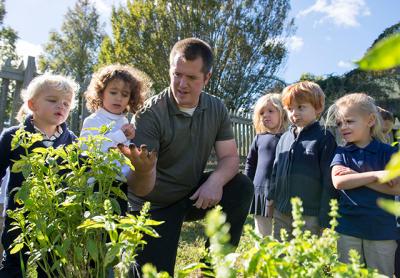Home for Butterflies and Birds

The Ross School’s lower school campus on Butter Lane in Bridgehampton is home not only to students, but also to birds, butterflies, frogs, and other animals that have found favorable habitats there.
The National Wildlife Federation recently named the school a certified wildlife habitat through its Garden for Wildlife program. Schools, parks, farms, businesses, religious institutions, and private properties are eligible for certification if they provide what the organization deems essential elements for wildlife, such as clean water, natural food sources, cover, and places to raise young.
“We have made a commitment to this certification that we’re going to keep up,” Bryan Smith, a Ross science teacher who led the effort, said Tuesday. “We want to let everyone in our community know that this is what we want our school to look like. We’re really happy to have gone through this process. The kids were very into it. They put a lot of effort into making our campus look nice as well as making it a friendly place for nature.”
In a news release, the National Wildlife Federation’s Garden for Life program was reported to have certified close to 200,000 wildlife habitats across the country over the last 40 years. The Ross School’s certification includes recognition in the federation’s Million Pollinator Garden Challenge.
Along the way, Mr. Smith said, the Wellness Foundation of East Hampton gave the lower school a grant that was used to purchase tools and supplies, and the Ross School Parent Association supported the project financially. The school also received a grant from a government-sponsored organization called Monarch Watch, which allowed students to expand the school’s milkweed garden and attract more monarch butterflies. “We doubled the amount of milkweed we had on campus in the last year. They have been exploding here,” Mr. Smith said.
Mr. Smith said the National Wildlife Federation’s goal of environmental awareness aligns with the school’s approach to sustainability.
“We really focus as a school on our impact on the natural environment in pretty much every grade in science, how we interact with and interpret the natural world, and how we influence it,” Mr. Smith said.
